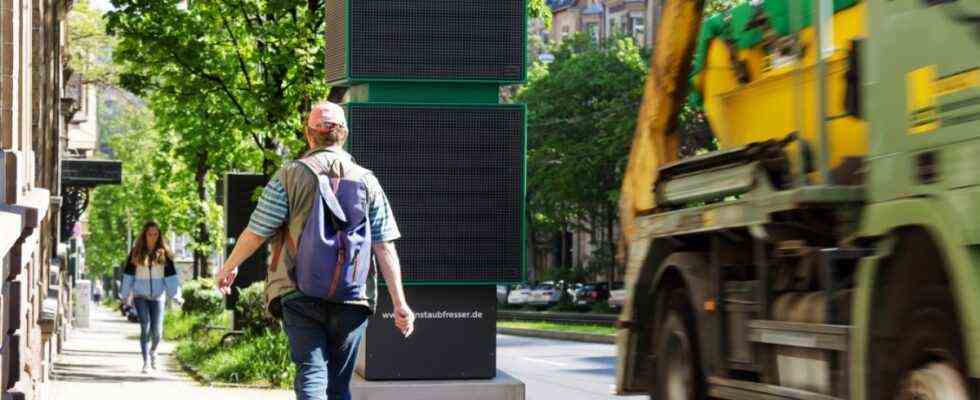The air in Munich has become cleaner. That’s the good news. The limit values for fine dust have been complied with across the city since 2012. The bad is: that’s not enough. Because at four particularly busy places in the city, the nitrogen dioxide (NO₂) pollution remained above the maximum annual average value last year. This was determined by the European Union and is 40 micrograms NO₂ per cubic meter of air. And again Landshuter Allee was the sad leader – even across Germany – with an annual average of 54 micrograms.
In the future, air filters at the roadside could provide relief for residents here. An experiment with initially seven, then nine filters will start in November and should last two years. It is a project of the Bavarian Ministry of the Environment and the Munich Environment Department. Scientific support is provided by four Bavarian universities under the leadership of the University of Bayreuth. The aim is to obtain scientifically proven information on the exact degree of effectiveness of filter systems in order to be able to integrate them into air pollution control plans in the future.
The air filter columns including measuring stations will be set up on the west side of Landshuter Allee between Blutenburg and Wilderich-Lang-Straße. The administration expressly emphasizes that the measure is not intended to be a long-term solution. After all, the goal is still to reduce emissions by reducing individual motorized traffic, for example by expanding local public transport.
Nevertheless, the city hopes for a similar effect as in Stuttgart. Filters have been in use there at the traffic hotspot “Am Neckartor” since 2018. An evaluation after two years showed that the systems were able to reduce fine dust levels by almost seven percent on average and reduce NO₂ pollution by nine percent.
For CSU city councilor Sebastian Schall, the filter columns are only the “second best solution”, as he said in the city council on Wednesday. As is well known, the CSU has long campaigned for the extension of the Landshuter-Allee tunnel, which failed because of the green-red city government. She had buried all tunnel plans in her coalition paper. Instead, noise barriers on the Borstei are now supposed to relieve the residents of the Middle Ring. In addition, an enclosure with a walk-on, green roof could connect the residential areas on both sides of the Middle Ring with one another in an urban planning manner.
Thanks to Corona, emissions fell last year – but that’s not enough
But even for green-red, the exhaust filters are only a temporary solution, as Julia Schmitt-Thiel (SPD) and Florian Roth (Greens) explained. The best solution, according to Roth, is a quick turnaround in traffic with emission-free vehicles and more public transport. Regarding the tunnel dreams of the CSU, Roth said that the tunnel would only shift emissions.
These have decreased throughout Munich in recent years, including on Landshuter Allee. There the annual mean value in 2015 was 84 micrograms of NO₂. The fact that a comparatively low value of 54 micrograms was achieved in 2020 is also due to the corona pandemic. During the lockdowns in spring and autumn, motorized traffic temporarily fell by 50 percent, which is why the measurement result was only partially cause for joy.
Apart from Munich, according to the Federal Environment Agency, the NO₂ limit value was exceeded in only five other German cities in 2020: In Ludwigsburg, Limburg an der Lahn, Stuttgart, Darmstadt and Hamburg. Whether Munich can suck away from first place with the new filter columns should be seen by October 2023.

